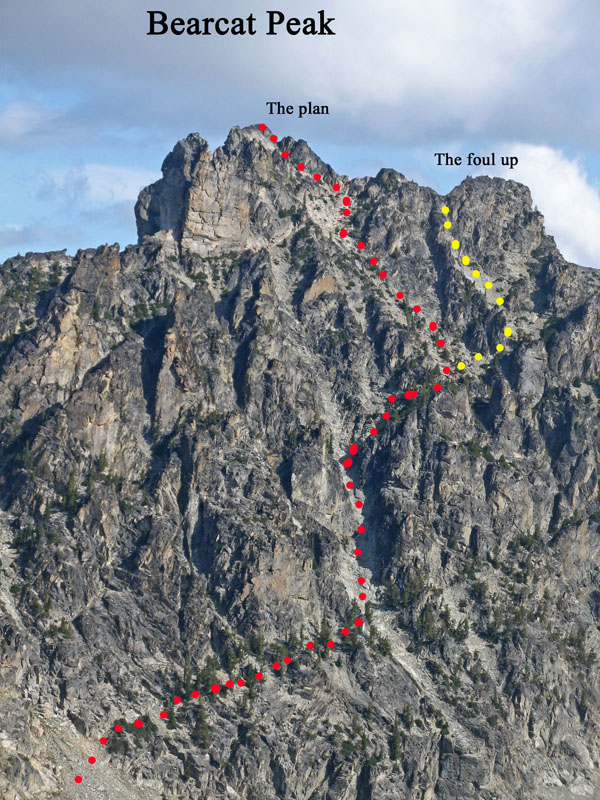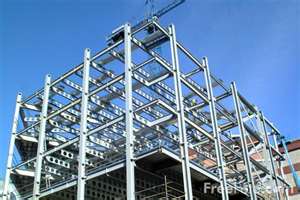It was mid October, well past the time to head into the North Cascades to climb a major peak. And it had already snowed more than a foot but the weather had cleared and it looked like we were in for a few days of clear, cold weather. So I called my new climbing partner, Kim Colis, and asked if he was up to trying an October climb. I had climbed a few peaks with Kim, including The Tooth and Cathedral Rock, so I knew his technical ability was not lacking but I didn't know how he would react to unforeseen occurrences... for example, an unexpected bivy! So we packed for a three-day trip and headed out. We dropped our big packs on the little snowfield immediately below Sahale Peak and proceeded to climb Sahale. After taking in the hundreds of peaks visible from the summit we descended and set up our tents. The next morning we packed our summit packs, including some extra clothing "Just in case we have to bivy". Kim was a bit skeptical but it was a long way across the upper Horseshoe Basin to climb the west summit of Buckner and the days were definitely getting shorter.
On the way across the upper basin we came across the tailings from an old mine. The tailings reached several hundred feet down the slopes just below Ripsaw Ridge so I knew the tunnel system of the mine had to be sizeable... well worth taking a bit of precious time to investigate. Se we climbed the tailings and found tracks that had been used to convey the ore out of the tunnels. There were still some camp items lying around such as knives and forks from the now disappeared cook shack. The tunnels looked very solid
with almost no rocks lying on the tunnel floor even though it had been likely sixty years ago that the mine was active. We put on our headlamps and prceeded about 300 feet back into the single tunnel before reaching its end. It appeared that the miners had been trying to intercept a gold csrrying vein but had not been successful.
We hurried on across the basin and slogged our way up to the west summit in about a foot of soft snow. There was no use to even look for a summit register so we headed down to retrace our steps back across the basin. To get back up to our camp we would need to climb seveeral hundred feet of cliffy headwall, something I knew we could do successfully using our headlamps, but I wanted to put Kim to a little test to see how he would handle a bivy. So I announced that it would be better to hunker down for the night at the base of the headwall rather than risk the cliffs in the dark. Kim zseemed OK with that and we began gathering dried branches of the scrubby willow bushes around us and started a fire. We put on all our clothes and huddled by the fire. There was a problem, the slope we were on was fairly steep and we and the fire kept slipping downhill but we managed even catching a few winks during the night. It was very cold but not bitterly cold and we survived none the worse for wear. Kim had passed the test.

My route on Bearcat Ridge... another foul-up!
More later.

